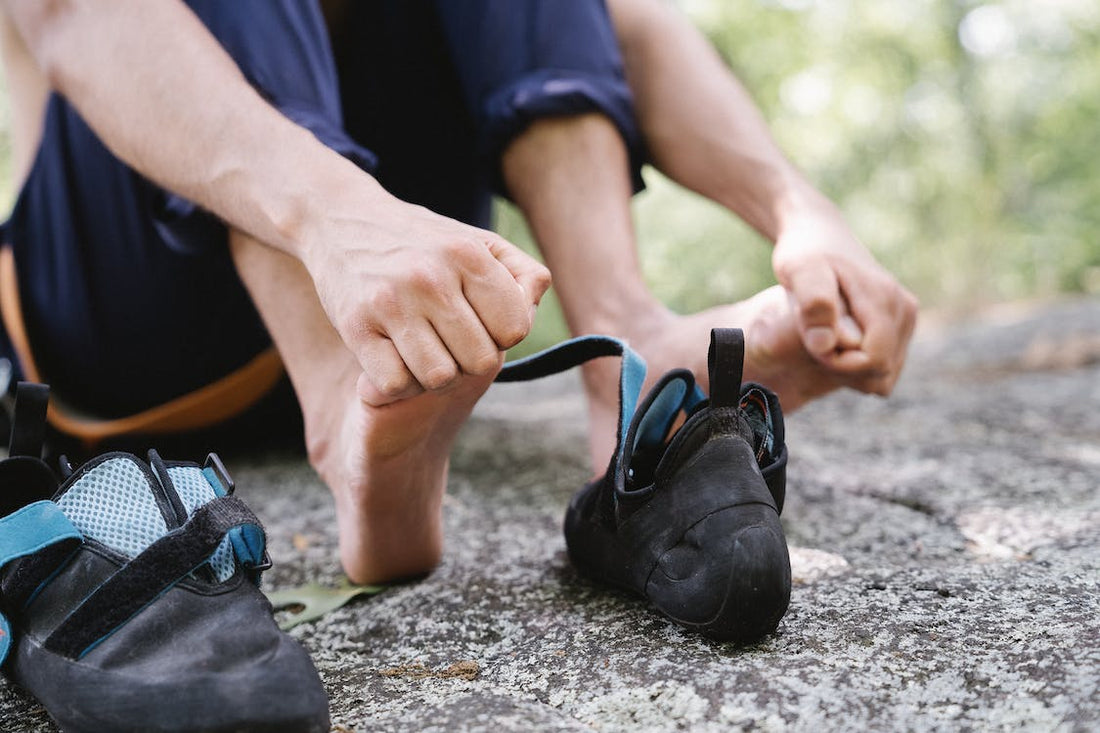
The consequences of ignoring foot pain
Share
Foot pain is a common complaint among individuals of all ages and backgrounds. It can result from a variety of causes, including injury, infection, or chronic conditions such as arthritis or diabetes.

While some people may dismiss foot pain as a minor inconvenience, leaving it untreated can have serious consequences on one's overall health and well-being.
This article aims to outline the various complications that may arise from ignoring foot pain and to emphasize the importance of seeking appropriate medical care.
1) Chronic Pain and Loss of Function
One of the most obvious consequences of not treating foot pain is the development of chronic pain.
When foot pain persists for more than a few months, it can lead to significant discomfort and reduced quality of life. Individuals with chronic foot pain may experience trouble walking, standing for prolonged periods, or participating in daily activities.
This loss of function can lead to muscle weakness, joint stiffness, and reduced mobility, further exacerbating the issue.
2) Gait and Postural Changes
When foot pain goes untreated, it can cause changes in a person's gait or walking pattern.
This altered gait maintained for a long period can place additional stress on other joints, such as the knees, hips, and low back, leading to a domino effect of pain and dysfunction.
Moreover, the body may compensate for the pain by adopting poor posture, which can cause muscle imbalances and increase the risk of developing musculoskeletal disorders.
3) Delayed Healing and Increased Risk of Re-Injury
Ignoring foot pain can prolong the healing process, particularly when it is caused by an injury.
Without proper care, minor injuries such as sprains or strains may worsen over time, leading to more severe damage that requires extensive treatment or surgery.
Additionally, untreated foot pain can increase the risk of re-injury, as weakened muscles and compromised joint stability make the foot more susceptible to acute injuries and trauma.
4) Infection and Complications
In some cases, foot pain may be a sign of an underlying infection or inflammation.
If not treated, these conditions can worsen, leading to the development of more serious complications such as cellulitis, abscesses, or even septicemia (blood infection).
Diabetic individuals, in particular, must be vigilant about foot pain, as they are at a higher risk for developing diabetic foot ulcers, which can result in severe infections and, in extreme cases, amputations.
5) Psychological Effects and Reduced Quality of Life

The consequences of untreated foot pain are not limited to physical effects. Chronic pain can take a toll on mental health, leading to increased stress, anxiety, and depression.
Furthermore, the loss of function and mobility can lead to social isolation, as individuals may withdraw from activities they once enjoyed due to pain or fear of re-injury.
This reduced quality of life can exacerbate mental health issues, creating a vicious cycle of pain and emotional distress.
6) Economic Impact
Ignoring foot pain can also have financial repercussions, both at an individual and societal level.
The cost of treating more advanced conditions and complications is often significantly higher than addressing foot pain in its early stages.
Moreover, chronic foot pain can lead to lost productivity and missed work, placing an economic burden on both the individual and their employer.
Foot surgery costs in the US range from about 3000$ to 30000$.
Preventative Measures and Self-Care
While seeking professional help is vital in addressing foot pain, there are several preventative measures and self-care strategies that can help maintain optimal foot health:
- Wear appropriate footwear - Choose shoes that provide adequate support, cushioning, and protection for your feet. Avoid wearing high heels or ill-fitting shoes for extended periods, as they can cause strain and exacerbate existing foot issues;
- Using insoles - For those suffering from foot pain, insoles play an important role in alleviating the pain, by reducing the impact absorb by the foot and providing additional cushion;
- Maintain a healthy weight - Excess weight can put additional pressure on your feet, increasing the risk of developing foot pain and other complications. Adopting a balanced diet and engaging in regular physical activity can help manage weight and promote overall health;
- Practice good foot hygiene - Wash your feet daily with soap and water, and dry them thoroughly, particularly between the toes. Keep your toenails trimmed straight across, and avoid cutting them too short to prevent ingrown toenails;
- Stretch and strengthen - Incorporate foot and ankle stretches and strengthening exercises into your daily routine to maintain flexibility and muscle strength. This can help prevent injuries and reduce the risk of developing foot pain;
- Address any foot pain promptly - If you notice any signs of foot pain or discomfort, seek professional help sooner rather than later. Early intervention can prevent the development of more serious issues and ensure appropriate treatment.
Conclusion
In conclusion, the consequences of ignoring foot pain extend beyond physical discomfort and can have significant impacts on an individual's overall quality of life.
By prioritizing foot health and seeking professional help when needed, individuals can prevent the development of more serious complications, maintain mobility, and enjoy a better quality of life.
Remember, your feet play a crucial role in your daily activities and overall well-being, so it's essential to give them the care and attention they deserve.
Author Bio

Marlene Carvalho
Certified Sports Physiotherapist of Elite and Olympic athletes; Performance Coach to racing drivers
Marlene Carvalho is a sports physiotherapist passionate about all things sports.
References
- Thomas, M. J., Roddy, E., Zhang, W., Menz, H. B., Hannan, M. T., & Peat, G. M. (2011). The population prevalence of foot and ankle pain in middle and old age: A systematic review. Pain, 152(12), 2870-2880.
- American Diabetes Association. (2020). Microvascular Complications and Foot Care: Standards of Medical Care in Diabetes—2020. Diabetes Care, 43(Supplement 1), S135-S151.
- Chuter, V., & Spink, M. (2014). The relationship between foot pain, anthropometrics, and foot posture. The Foot, 24(2), 75-80.













